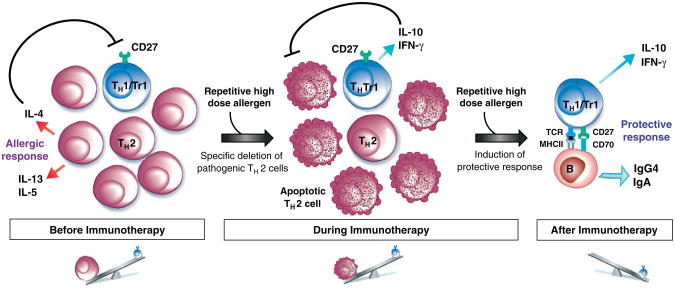Figure 3.
Schematic representation of sequential immune deviation leading to the beneficial effects of ASIT. Before ASIT, the high frequency of allergen-specific CD4+ T cells in allergic individual is dominated by pathogenic TH2 cells. TH2 cytokines inhibit the differentiation and induction of IL-10-secreting TR1 cells and IFN-g secreting TH1 cells. High allergen dose during the course of ASIT induces apoptosis of CD27-allergen-specific TH2 cells which are typically in the final stages of differentiation. In contrast, the less differentiated CD27+ allergen-specific TH1/TR1 cells are more resistant to apoptosis. Hence, the latter becomes increasingly dominant. Stimulation of TH1/TR1 cells leads to IFN-γ and IL-10 production and the induction of allergen specific IgG4 and IgA that can suppress the Type 1 allergic immune response.

